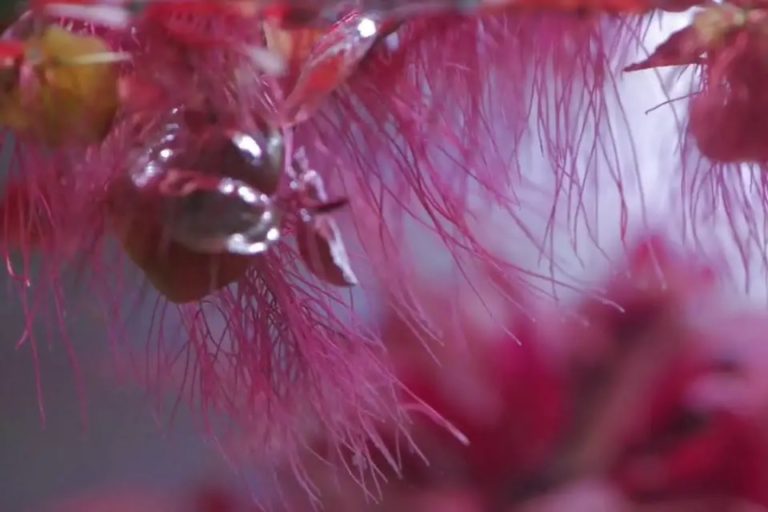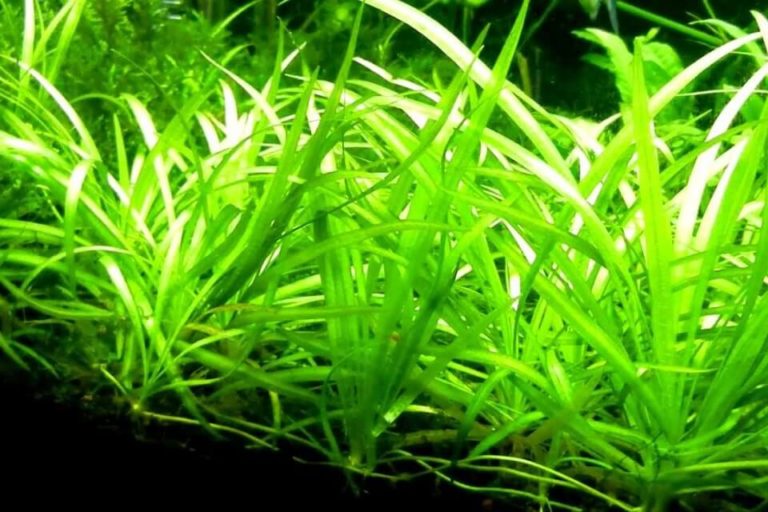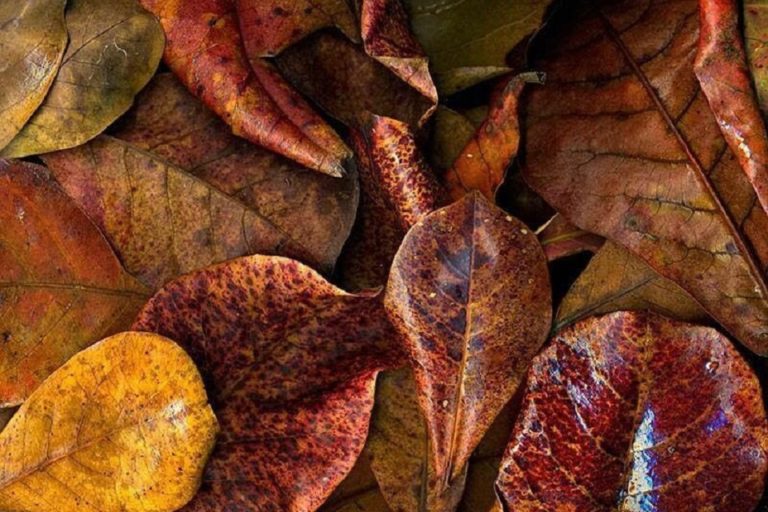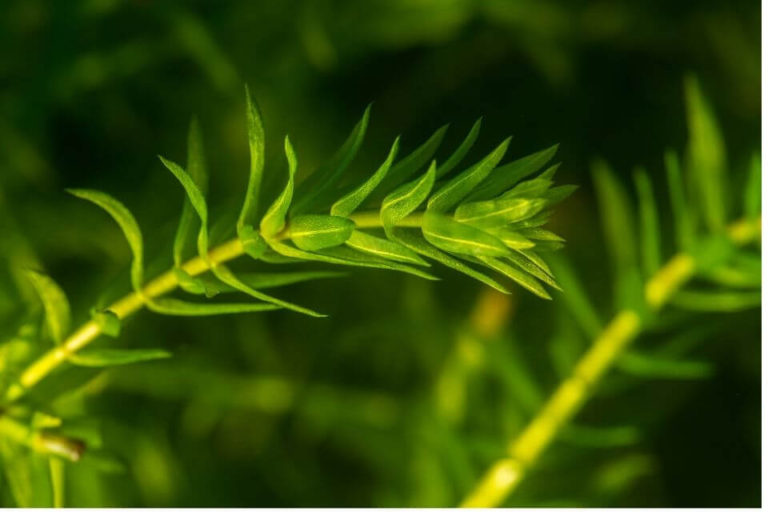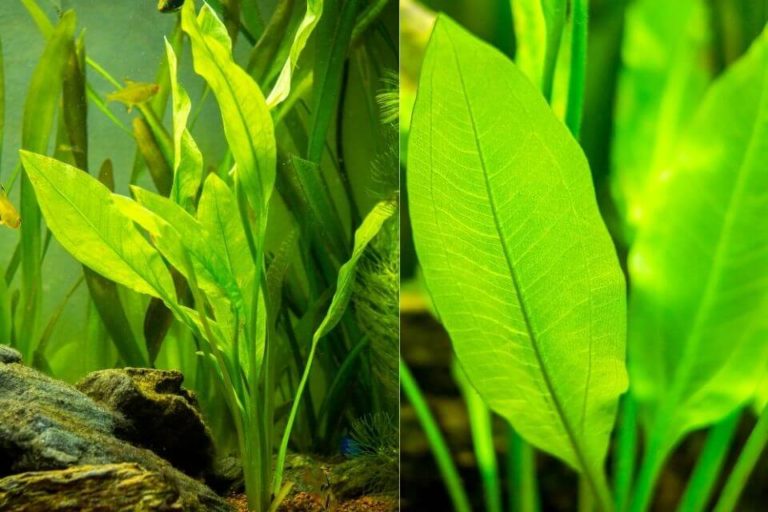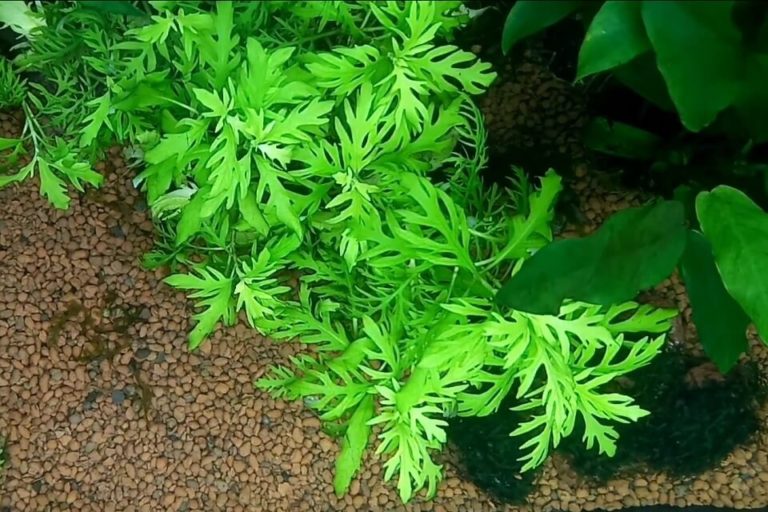Java Moss Plant : Complete Care Guide, Planting and Propagation
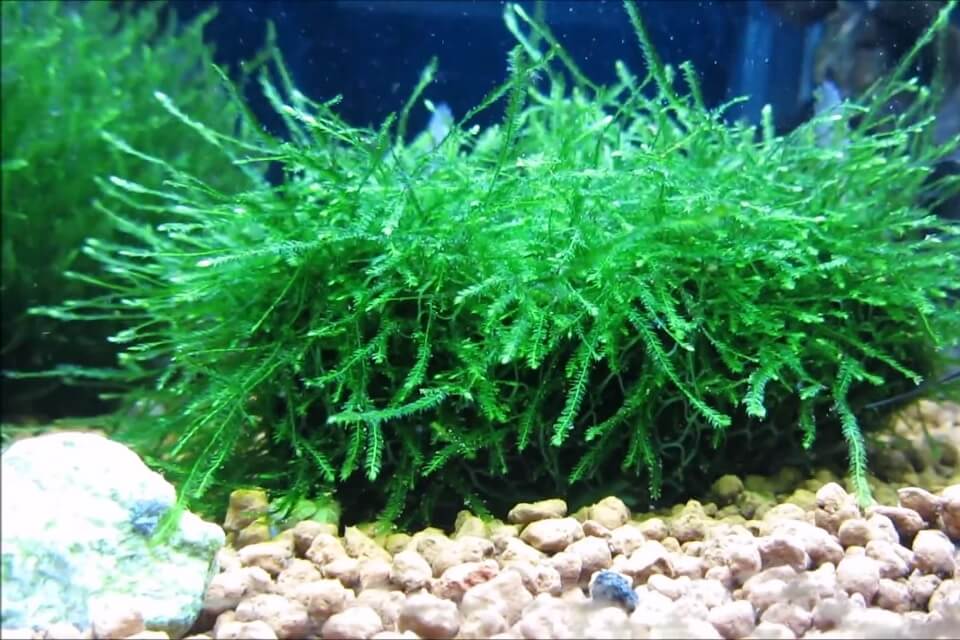
Java Moss plant is a freshwater aquarium plant that originated from the Southeast Asia region. This plant is mostly used by fishkeepers for decorating purposes while also help to maintain the underwater ecosystem. They use this plant to create beautiful underwater landscapes.
This plant plays a vital role to maintain the health of an aquarium. This is a very common aquarium plant among aquarists due to the minimal care requirements. It needs less effort when it comes to planting, caring, and maintenance.
The right temperature, lighting, and pH levels play a vital role in the growth of this plant. Java Moss plants used in the creation of carpets of the tank bottom that look very stunning. The biggest problem that threatens this plant is the growth of algae as it destroys the plant.
Rest of this article, we will discuss all the useful facts and important care tips that you need to know about this Java Moss plant. Stay focussed to read more exciting details.
| Quick Facts: | |
|---|---|
| Common Names | : Java Moss, Mini Moss, Willow Moss, Christmas Moss |
| Scientific Name | : Taxiphyllum barbieri |
| Family | : Hypnaceae |
| Origin | : Southeast Asia |
| Care Level | : Easy |
| Growth Rate | : Medium |
| Size | : 4 inches |
| Growth Conditions | : Submersed, or land |
| Propagation | : Cutting |
| Placement | : Floating or attached to wood or rocks |
| Substrate | : Not necessary |
| Lighting | : Medium |
| Minimum Tank Size | : 5 gallons |
| Water Condition | : Freshwater |
| Temperature | : 59 °F - 86 °F (15 °C - 30 °C) |
| Water Hardness | : 8 - 12 dGH |
| Water pH Level | : 5.0 - 8.0 |
| CO2 Level | : Medium |
Overview of Java Moss Plant
Java Moss plant has different names like Mini Moss, Willow Moss, Christmas Moss, and many others. This plant’s scientific name was formally known as Vesicularia dubyana. This name was recently changed to Taxiphyllum barbieri.
This plant grows in freshwater and belongs to a family known as Hypnaceae. This plant grows up to a height of 4 inches and a width of 4 inches and does not possess an exaggerated growth rate. It does well in a low-light environment.
Origin, Distribution, and Availability
The origin of the Java Moss plant is in Southeast Asia. It is easy to plant it and as it grows it attaches itself to things like rocks, tree trunks, and roots. The tropical climate is the best for the growth of this plant.
This plant is largely sold all over the world and you can find it both in local aquariums and online stores.
Appearance, Size, and Growth
Java Moss plant has small branched stems and tiny leaves. The leaves are oval. When under the water, the leaves of Taxiphyllum barbieri are bright green but this does change when they grow on land.
This is because the leaves become so much smaller on land than when in water. This plant does not possess any real roots, and because of this, they use stems and leaves to absorb nutrients.
Java Moss plants can attach themselves to things as a result of having rhizoids which they use for this purpose. This plant grows at a medium rate and is very useful to aquarists.
When it is fully grown, it measures up to 4 inches in both height and width. There is not much to do when it comes to the growth of this plant, because this plant is capable of growing without needing too much work.

Planting Java Moss Plant
1. Set up a freshwater tank and make sure it is not smaller than 5 gallons. Then let the water be between 59 to 86 degrees Fahrenheit (15 to 30 degrees Celsius). Lower temperatures fasten the growth of this aquarium plant.
2. Water acidity level needs to be between 5.0 to 8.0 pH. So, you need to have a pH test to make sure this stays constant.
3. Place a filter in the tank as this does help with water circulation and will also help in cleaning the water. Great circulation in the tank will be of great help in the growth of this plant as there will be a great spread of nutrients in the water causing fast growth.
4. Use LED lights on the tank as your Taxiphyllum barbieri will require some light for it to grow. Brightness affects how this plant will grow, and this depends on how you want your moss plant to look. For darker moss, use low lights and vice versa.
5. Now the tank is ready for the moss. Drop the moss in the water and if you want it to grow on top of something, tie it to it and see it grow to attach itself to it.
6. Keep off disturbing the moss when it is inside the tank as doing so can interfere with the growth of the moss.
7. To care for the moss, you will need to trim it every week using scissors. Change the water in the tank weekly using a siphon.
8. If algae grow on the moss, replace it with another. If you want to propagate the moss, cut off some pieces from the moss.
9. Now you wait for the moss to grow to the proper size and get it out of the tank and place it anywhere you like.
Java Moss Plant Care and Maintenance
– Tank Size and Tank Setup
For a Java Moss plant to survive, you will need to purchase a tank that can fit a minimum of 5 gallons of fresh water in it. This makes it possible for you to grow your Taxiphyllum barbieri plant and also keep some fish if you wish.
Use a heater to keep the temperature consistent. The tank’s acidity levels should be between 5.0 to 8.0 pH, and using a pH test helps with this. All these contribute to the growth of this plant which you want to be perfect.
– Water Parameters and Conditions
The tank capacity you use should at least be 5 gallons. The water needs to be fresh and have a temperature that is between 59 to 85 degrees Fahrenheit (15 to 30 degrees Celsius).
There is no reason for you to add any chemicals to the water and avoid using salty water. Salty water affects the health of the Java Moss plant.
– Lighting
If you want dark-colored Taxiphyllum barbieri plants, use low lighting when growing them. Brightness does fasten the growth of your Java Moss plants.
Lighting depends on how you want the plants to turn out. Either way, it is always advisable that you settle for low lighting as it is the best for Java Moss plants.
– Care and Maintenance
Java moss plant is easy to work with as it does not require any special treatment. Aquarists are very familiar with this plant as they use it for different purposes. Java Moss plant is grown in all kinds of water but it is good that you plant it in waters that have good currents.
Maintaining the java moss plant is easy. The most amazing thing about the plant is that killing it is impossible. Pruning is necessary when it comes to maintaining the plant as lack of doing so leads to the plant not absorbing water right which causes damage to the plant.
Algae is the enemy of this incredible plant. Taxiphyllum barbieri is sturdy which means that if you want to clean debris from it you can get it out of the tank, and do so.

Propagation of Java Moss Plant
Propagation of the java plant is easy to carry out as all you are required to do is cut off a chunk from the plant and make sure in the process, you also have the roots accompanying the chunk.
The cut piece can grow singularly and form more Java Mosses for you. This is the ideal way of getting more Mosses from one grown plant. Placing this piece on the surface you want it to grow on will lead to it growing on it, and you can secure it using a fishing line.
Compatible Tank Mates for Java Moss Plant
This plant can be placed in any tank of any size and grows well eventually. Fish like Goldfish, Cichlids, and others fish species can be tank mates for the Taxiphyllum barbieri plant. This means that you can have fish in a tank where you have grown your Java Moss plants.
Here are the most compatible tank mates for Java Moss Plant:
- Killifish
- Scarlet Badis
- Tetras
- Betta fish
- Bamboo shrimp
- Paradise fish
- Peacock Gudgeon
- Catfish species
- Cichlid species
- Chili Rasbora
- Goldfish
Frequently Asked Questions
If you still on the fence about choosing the best plant for your freshwater tank, below questions and answers might help you to take a final decision.
Can Java Moss Grow Out Of Water?
Java Moss can grow out of the water but being submerged is the best condition. Java Moss is not completely aquatic and hence requires to be kept moist to flourish. Taxiphyllum barbieri can be grown on any surface be it a mesh wooden surface provided it keeps contact with a source of nutrients.
Is Java Moss Plant Hardy?
Java Moss is a hardy plant and is one of the easiest to grow. With its origin being southeast Asia, Java Moss requires a tropical climate and can grow on a myriad of surfaces including rocky areas, banks, and also on trunks of trees.
Due to the minimal requirements of this plant, it is very common amongst aquarists and is very readily found be it in shops or even on online platforms. Its popularity is due to its aesthetic nature that beautifies tanks and also it’s playing the role of cushioning eggs. Breeding fish also use Taxiphyllum barbieri as food.
Is Java Moss Good For Aquarium?
Java Moss is good for aquariums as it has got many uses that are beneficial to aquarists. This aquarium plant can be used to shield the tank from external lighting that might be affecting the fish and also eliminates the mirror effect created by light in the room.
Taxiphyllum barbieri is also used as the surface for fish to lay their eggs and protect them from damage during breeding. Creatures also enjoy digging through Taxiphyllum barbieri looking for food.
It is good to hide filters in tanks and Taxiphyllum barbieri can be used to do this perfectly but due to quick growth, one needs to keep checking for clogging.
How Can I Make Java Moss Grow Faster?
Java Moss does not do well in a marine aquarium so a freshwater aquarium is needed to grow it. Big tanks are also necessary as this plant starts to grow it takes up a lot of the space in the tank making the tank crammed up. For faster growth, this requires clean and freshwater.
The water also requires a constant temperature of around 75 °F (24 degrees centigrade) for faster growth. Any more or less than this will have the Taxiphyllum barbieri growing slower than expected.
For this to be achieved one needs to install a water heater in the tank and keep on checking the temperature. If this is not done, the water temperature will keep fluctuating and affect the steady growth of the plant.
The acidity of the water tank will also affect the growth of this plant as is for most live aquarium plants. A pH level of around 5.0 to 8.8 is recommended for the Java Moss plant to thrive well. For this to be achieved you should buy a pH test kit in any aquarium shop.
To raise the pH level in a water tank for live aquarium plants addition of shells or rocks is recommended by experts. Ample overhead lighting will also increase the growth of Java Moss as it provides light for the live aquarium plants.
Is Java Moss Invasive?
As easy as Java Moss is to install and grow, the live aquarium plant is also very hard to kill because it tends to attach it to any surface available. This is because this species of live aquarium plants do not have roots and instead get nutrients through its leaves and stems.
So yes, Java Moss is a very invasive live aquarium plant.

Does Java Moss Need Lots Of Light?
Java Moss requires light and if it does not get adequate light it starts turning brown and dies off. Most people commit this mistake because the live aquarium plant is known to grow on anything and its survival is almost considered certain.
If the location intended for your water tank does not allow for the penetration of natural light, an artificial overhead light can also do the trick.
The light also needs regulation as too much light might make the live aquarium plants overgrow. And take up much of the space in the tank while also clogging the filters installed in the tank.
Does Java Moss Give Oxygen?
Java Moss and other live aquarium plants give off large amounts of oxygen. As they have leaves with more surface area than most plants enabling them to capture more pollution material and converting them.
This is evident as most European cities are considering using live aquarium plants to reduce their carbon footprint because Moss gives out more oxygen than trees.
Also, it’s hard to plant trees in the city as they can damage structures with their roots. Also, it takes up more space making live aquarium plants the more suited solution to this 21st-century problem.
Does Java Moss Float or Sink?
Generally, the Java Moss plant is meant to sink and not float. However, it can also float at the very fast beginning and the early stages. Typically, the Taxiphyllum barbieri plant has no permanent roots, just like any other moss, and uses its leaves to absorb nutrients.
Instead, the Java Moss begins by growing while free-floating, and then it develops rhizoids that attach the moss to the sand, decorations, rocks, gravel, and driftwood. The rhizoids help to keep the plant sunk.
Lack of rhizoids is the reason why this plant floats at the early stages. However, factors like change of tank and saturated water can also result in the moss floating.
Does Java Moss Need A Heater?
Java Moss requires a consistent if not constant temperature as most live aquarium plants do. Java Moss requires a temperature of around 75 degrees Fahrenheit (24 degrees centigrade) to grow. If the temperature variation lower or higher may cause it to grow slowly or even die off.
Due to this the live aquarium plant requires a heater to help maintain the temperature aiding in the faster growth of the plant. A heater alone will also not solve this.
You have to constantly check the temperature of the tank to avoid overheating. Because temperatures above 89 °F (32 degrees centigrade) will start killing the live aquarium plants.
A floating thermometer will help you keep the temperature in check.
Does Java Moss Reduce Nitrates?
The fish and other aquarium creatures release waste in the freshwater tank. This waste is in the form of ammonia which makes it dangerous for the life of the habitants in the water.
Growing Taxiphyllum barbieri in the freshwater tank can be very helpful to the organisms as it filters out ammonia and nitrates from the tank. This is because Java Moss like all other live aquarium plants grows fast hence helping to aid in a faster nitrogen cycle in the tank.
How Do You Sterilize Java Moss?
Most people opt to bleach live aquarium plants like Java Moss for faster sterilization. But, the plant being so delicate, can die off from the chemicals in the bleach.
Instead of bleaching, look for a container and fill it with enough water to cover the live aquarium plant to quarantine it for a couple of weeks. The water also needs to be changed daily for the plant to be fed.
Will Hydrogen Peroxide Kill Java Moss?
Hydrogen peroxide is a common problem to most people when it comes to the Java Moss plant. Generally, there is no concrete answer to this question. The hydrogen peroxide can kill Taxiphyllum barbieri and on the contrary, it can’t kill it.
The fact behind this is the concentration of hydrogen peroxide and how you do it. Generally, hydrogen peroxide is a less harmless oxidizer and that is the reason why it can be used safely on Java Moss.
The concentration of the peroxide is the key determinant: high concentrated peroxide will kill this plant, and diluted peroxide will not harm the Java Moss.
Can You Superglue Java Moss?
Java Moss does not have roots but uses its stems and leaves to gain nutrients. Because of this using superglue is safe for live aquarium plants. Most superglues are cyanoacrylate which does not endanger aquarium plants.
Do Guppies Eat Java Moss?
Live aquarium plants make guppies feel relaxed in their environment and also make it healthier for them. Guppies do not eat Taxiphyllum barbieri. But, thrive with the presence of the live aquarium plants as they provide hiding places for them as they are easily frightened.
Java Moss is also loved by guppies because it serves as a natural air filter that improves the health of guppies.
Do Fish Eat Moss Balls?
Fish do not eat moss balls but use them as hideouts and for exploration in the aquarium. Fish enjoy having moss balls in the tanks as they eat food that is caught on them which is an easier way for the fish to feed.
The fish and other creatures in aquariums enjoy the moss balls so much that they end up disfiguring them from the endless activities.
Final Thoughts
Java moss plant is a plant that does not complicate things for the aquarist as it is easy to plant. You don’t have to spend so much of your time caring for the plant. Whether you are a beginner aquarist or an experienced one, planting this plant will not be difficult for you.
This plant has a variety of uses as it provides aesthetic beauty to your tank and also offers shelter to the newborn fries. The small fishes can seek protection from this plant against other big fishes that can feed on them.
The good thing about specializing in the planting of the Java Moss plants is that it does not require a lot of capital. This means that you can plan the little you have to fit the activity of planting a Java Moss plant.
The only drawback about planting these plants is the attacks from algae. Algae do destroy this plant, and this is no reason to demoralize you from getting into the business of having a Java Moss plant in your aquarium.


